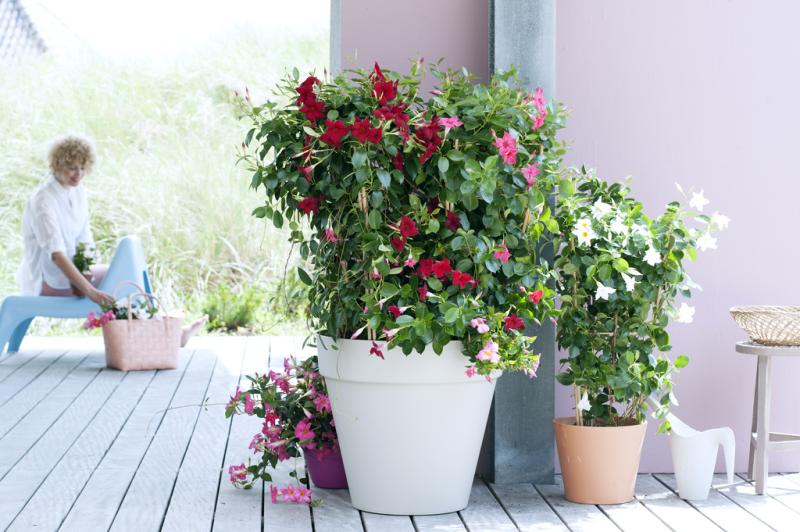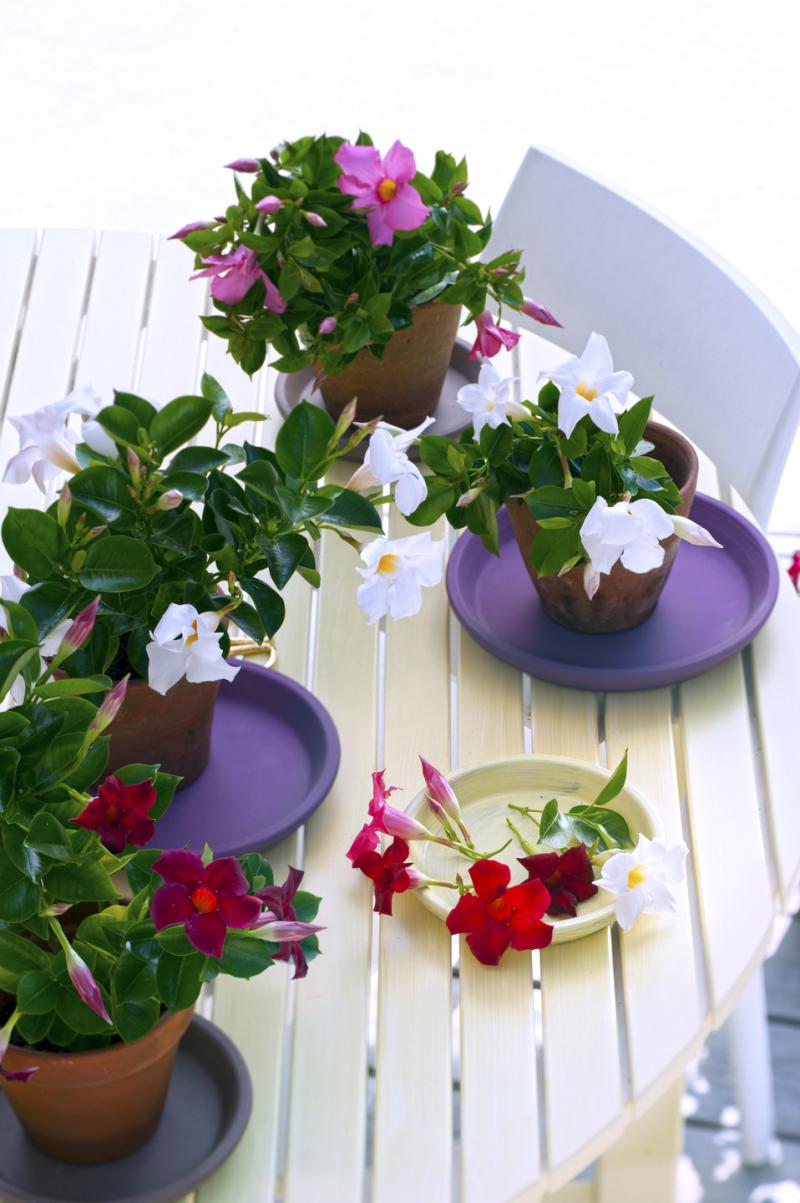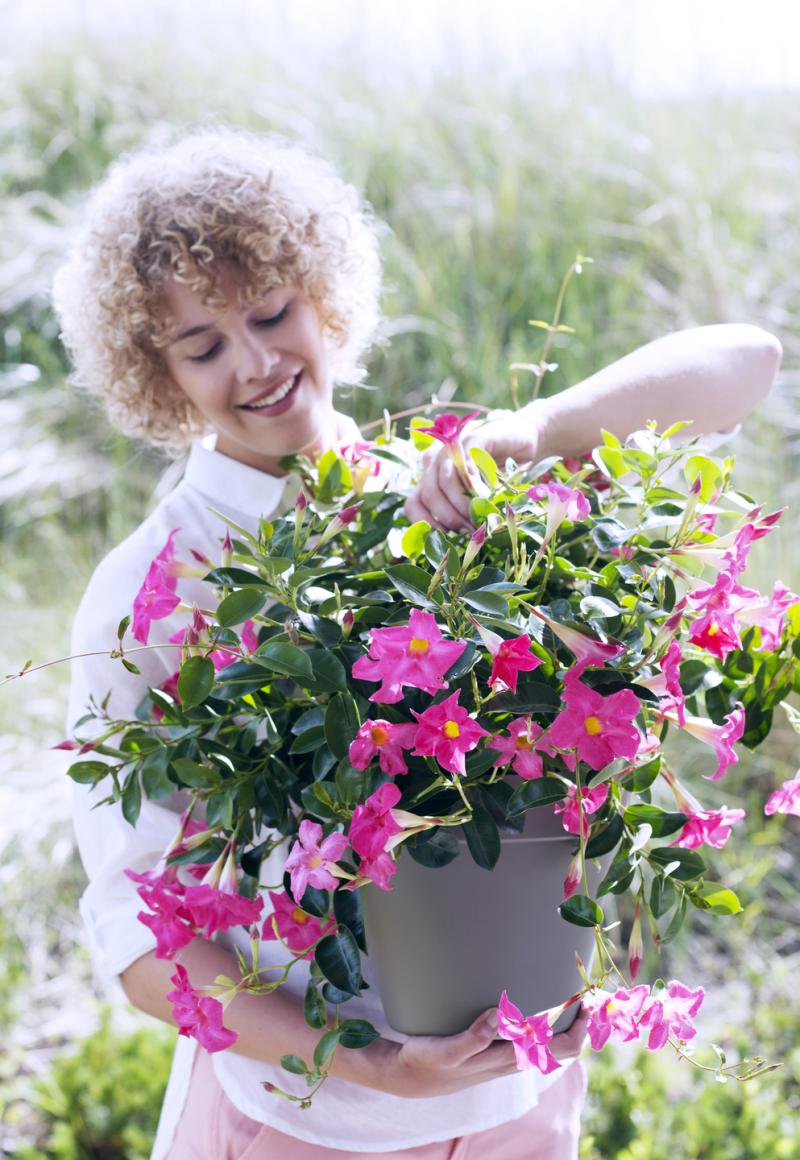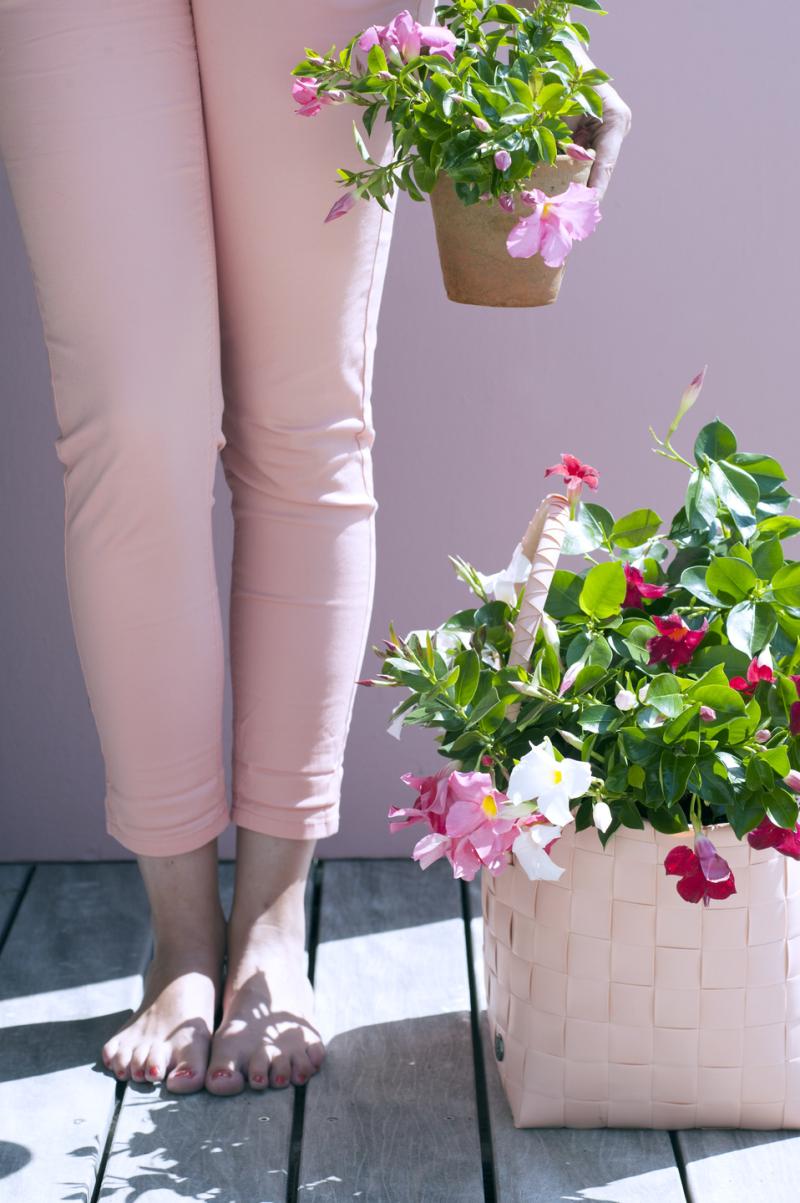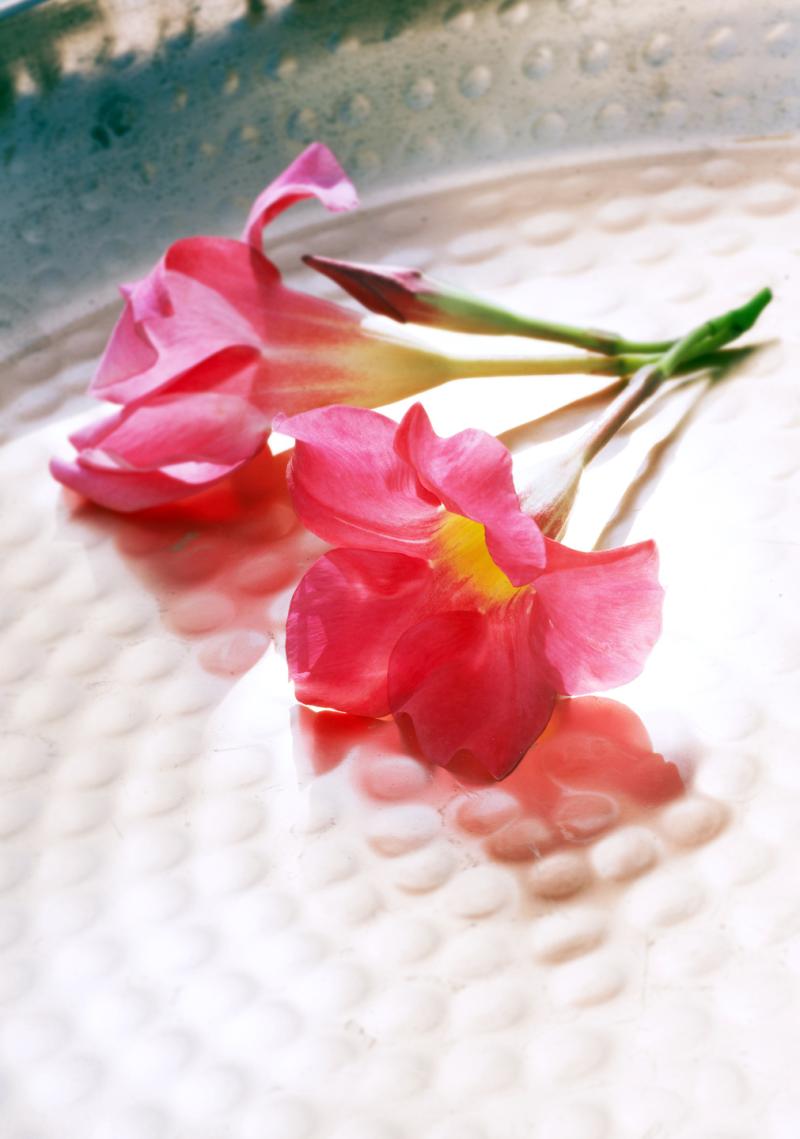Garden Plant of the Month for May: Mandevilla
Exotic rewarding climber!
Mandevilla is one of the most rewarding flowering garden plants. The white, pink or red flowers on the plant last from May until the frosts arrive. And it keeps flowering without too much effort. It’s no surprise that Mandevilla is enormously popular in gardens and on balconies and patios. The plant was formerly called Dipladenia, and is sometime still sold under this name. This garden plant of the month for May can give pleasure throughout the summer and beyond.
Mandevilla: pink, white or red trumpet-shaped flowers
Mandevilla is a climbing shrub that flowers from May to October. Although this exotic climber originates from South America, it’s also very happy in our gardens. With its trumpet-shaped, beautifully scented flowers the plant keeps blooming endlessly. The flowers stand out beautifully against the dark green, shiny foliage.
The plants are sold in various sizes, from very small plants for planting in beds or as a table plant on the patio through the very large climbers on trellises or stakes which can be metres high. You can even use them to create an entire living wall, since this keen grower can quickly produce long tendrils to cover a wall or fence. Do provide some support though.
The white, pink and red colours look beautiful in a pot, either as a single colour or a mixture, whereby the combination of two or three colours growing and blooming together is magnificent. A variety of species can be found in the shops, produced by different companies. Mandevilla Sundeville and Mandevilla Diamantina are the most frequently offered. The one thing they all have in common is that they flower very profusely and give pleasure all summer long.
Caring for Mandevilla
Mandevilla will remain healthy and attractive by following a couple of simple tips. It’s important that it’s placed in light ranging from partial shade to full morning or evening sun. Mandevilla likes the warmth it enjoyed in its place of origin. Place the plant in well-draining, moderately damp soil, and water regularly. Too wet is certainly not good. Give extra plant food in the spring so that it continues to flower vigourously for a long time, remains healthy and is less vulnerable to pests and diseases. If wilted flowers are regularly removed, the plant will remain decorative right up until the first night frosts.
Mandevilla isn’t hardy, so as soon as winter comes the plant will die, unless it’s brought indoors and can overwinter in a cool, frost-free place. Make sure the plant does not bring all sorts of insects with it when it’s brought indoors. A light spot around 10°C is best . It doesn’t need a lot of water in the winter. Ensure good ventilation and don’t place Mandevilla in a draught or near a source of heat. The transition from outdoors to indoors can cause the leaves to turn yellow or shed, but that’s a natural reaction.
Mandevilla pruning tips
While the plant is in the garden or on the patio or balcony, all you really need to do is to train the tendrils through the plant or place them against the climbing aid from time to time. No further pruning is required during the growing and flowering season. The plant can be pruned back somewhat for overwintering before being placed in its winter location. This can also be done at the start of the new growing season in February. This is done particularly to ensure that the plant does not get too big, and to maintain an attractive shape.
POS-material Mandevilla:
You can download the promotion materials by using the links below:
- Poster Mandevilla
- Banner Mandevilla
More information about Mandevilla and other garden plants can be found at Thejoyofplants.co.uk.
Garden Plant of the Month Mandevilla is in the spotlight in May as the Garden Plant of the Month. ‘Garden Plant of the Month’ is an initiative by Thejoyofplants.co.uk. Growers and horticultural specialists from the floriculture sector select a garden plant every month at the request of Thejoyofplants.co.uk in order to inspire and enthuse. Because a garden isn’t a garden without plants.

